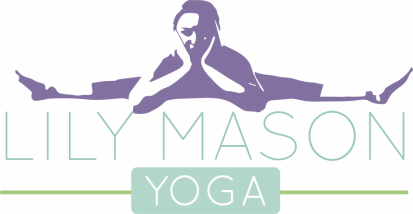According to Patanjali’s Sutras there are eight limbs of Yoga. We tend to think of the practice of Asana (the poses) when we think about yoga. But Asana is just the third limb. The practice of yoga is far more than what you see on Instagram or Facebook selfies - breathing doesn’t make for a very interesting photo. So what is Pranayama?
Put simply, Pranayama is the technique of controlling the breath. Prana translates to ‘life-giving force’ which makes sense to me as ‘that which gives me energy and flows in and around my body’. Ayama means control. During our yoga practice, we use techniques to control the breath and connect the body to the mind.
The Benefits of Pranayama
There are breathing exercises that increase lung capacity, balance the nasal passages, firm the abdominal muscles and quieten the mind.
Through learning a few simple techniques you can increase your energy levels and improve your yoga practice.
Our breath guides us through our yoga session. If your breath becomes strained or irregular, it is a sign that your body needs to slow down. In this way, the breath is a fantastic tool, offering us information about how we are travelling during our practice - and every day life.
Control of the breath allows a degree of control of the mind and this can be enhanced and improved with practice. You know this - imagine you’re in a stressful situation or you are tense or anxious or angry - you know that taking a breath will help - it will calm your body by ‘tricking’ it into believing it’s ok and your mind is given a chance to relax. If we can learn to breathe in such difficult times, we are better equipped to deal with those situations.
Practice
During Lily Mason Yoga classes, we practice several Pranayama techniques:
Ujjayi breath Also known as throat breathing or ‘victorious breath’. This is where you breathe in and out of your nose, but with the back of your throat constricted, as though you’re breathing through a little hole in your throat. It’s also often helpful to imagine you’re fogging a mirror with your mouth closed, on both the inhale and exhale. One of the major benefits of this practice is its ability to heat the body. As with most pranayama exercises, it works on your parasympathetic nervous system to soothe the mind.
Nadi Sodhana Or alternate nostril breathing. Hover your right thumb over your right nostril and right ring finger over your left nostril. In this exercise we alternate between closing the left and right side of the nose. Begin by breathing into the left nostril for a count of four, hold the breath in for a count of four, breath out of the right nostril for a count of four, breath back in through the right, again hold the breath in and finally breath out through the left nostril. This cycle is one round and ideally we’ll practice for 10-15 rounds. The ratios of breath can change with practice where the exhalation is twice the length of the inhalation. In this exercise you are balancing the left and right nasal passages as well as the left and right hemispheres of the brain. It is also a soothing exercise to calm the mind.
Kapalabhati Also known as the shining skull breath. During Kapalabhati you focus on your exhalation – forcing the breath out of your nose sharply and using your abdomen as a bellow - pulling it in as you exhale. The inhalation will happen automatically. Start out gently with 10-15 breaths, resting and then completing another two rounds. If you start to feel dizzy it’s a sign that you are stressing your body, so be aware of any physical reactions and take a break when needed. When done correctly, it is a very soothing practice, but also increases awareness and focus and if you're feeling sluggish and tired, or your sinuses are blocked a few rounds of Kapalabhati will really help.
Khumbaka AKA Breath retention. Your breath can be held inside and outside your body. During practice, gently place your tongue on the roof of your mouth and lengthen your exhales. Without force, gently make your exhalations twice as long as your inhalations. Hold your breath at the end of your inhalation and exhalation for increasing lengths, but without strain. There are many different versions, but the one most commonly taught during a Lily Mason Yoga class is inhaling for a count of four - a retention for a count of four, and exhalation for a count of four, and a retention of a count of four. Khumbaka can also be practiced as part of the above three exercises. The practice benefits us by slowing down our heart rate. You should be aware though, that if holding your breath increases your heart rate it is a sign you should ease off the practice, recover your breath and come back when you’re ready, at a gentler pace.
At least one of these practices will be done during a Lily Mason Yoga class, and there are many others we will play with, too. For more information on Pranayama, find a copy of TKV Desikachar’s The Heart of Yoga. This book offers a beautiful chapter on Pranayama, benefits, types, purpose, etc. It’s an amazing text for anyone keen to learn more of yoga philosophy and practice. If you would like a copy, let me know and I'll track one down for you.
Inhale, exhale, repeat...
x Lily



 RSS Feed
RSS Feed
